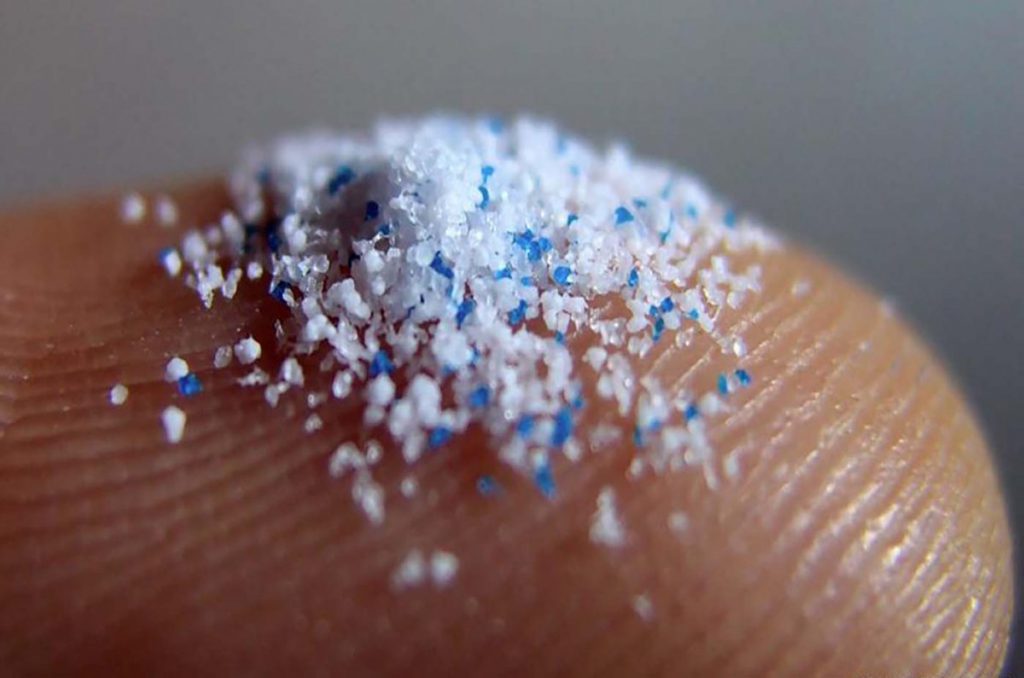
What is a microplastic?
Microplastics are plastic particles from 1 micrometer to 5 millimeters in length. On the larger end, they are about the size of a sesame seed. On the smaller end, these particles would be invisible to the naked eye.
Microplastics can be created intentionally (such as those found in skincare products or glitter) or formed when larger pieces of plastic break down. Some sources that contribute to microplastics in the environment may not be immediately obvious. Microplastics can come from the breakdown of synthetic fibers, tiny pieces of styrofoam, or candy wrappers. They are small enough that they can also be transported in the air and unknowingly consumed by both animals and people through water, air, and food.
What is the current research and regulatory situation?
Microplastic research is in its infancy in the science world, but some studies have quantified microplastics in drinking water and the differences between concentrations in surface water vs drinking water. In early 2024, the United States Geological Survey (USGS) published a nice review of current research and potential opportunities to add to this body of research including more studies to analyze the impacts to human health.
At the federal level, Congress passed the Microbead-Free Waters Act of 2015 which prohibits the manufacturing, packaging, and distribution of rinse-off cosmetics (and items such as toothpaste) containing plastic microbeads. Some states have enacted bands on microbeads in cosmetics as well as single-use plastic bags. Indiana’s 2015 legislation included bans on microbeads in personal care products and over the counter drugs. Currently there are no regulations about minimum levels of microplastics in drinking water although some states have implemented testing and funded more research.
What can businesses and individuals do?
Once plastics are in the environment and break down into microplastic particles, preventing exposure is very difficult. Therefore, reducing plastic production and use is the first line of defense for minimizing environmental contamination. First opt out of single-use plastic and look for reusable items that don’t contain plastic.
If you are looking to remove microplastics in your drinking water, a point of use treatment system such as select ultrafiltration or reverse osmosis technologies are capable of filtering particles as small as 0.001 microns.
Additionally, all of us can keep up to date with our local environmental advocacy groups to support more research, funding for new technologies on drinking water treatment and monitoring, and policies to limit the use of plastic and increase our recycling efforts.
No matter where you live or what you do, we can all start with something small today to keep our waters clean and remove plastic from our environments.
